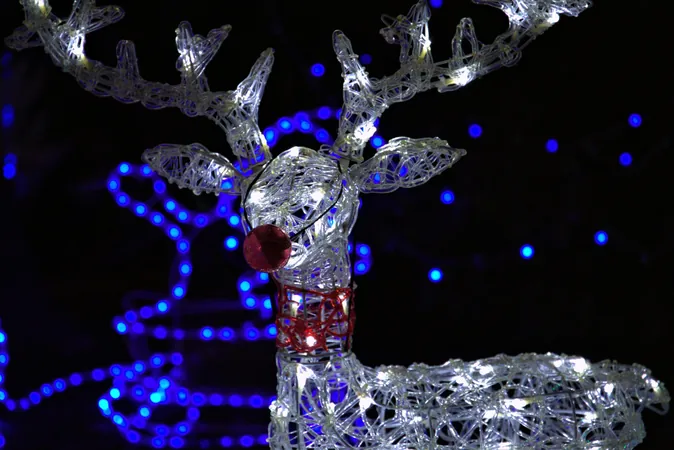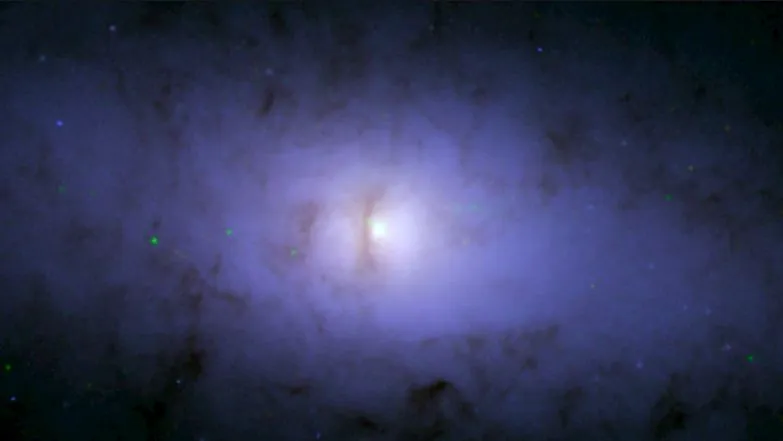
The Science Behind Santa’s Speed: How Fast Does He Really Go on Christmas Eve?
2024-12-24
Author: Emily
The Science Behind Santa’s Speed: How Fast Does He Really Go on Christmas Eve?
Every Christmas Eve, children around the globe eagerly await the arrival of Santa Claus, who must traverse enormous distances to deliver gifts in just one night. To achieve this feat, Santa and his trusty reindeer need to operate at dizzying speeds, and recently, researchers have tackled the intriguing question: How fast does Santa need to go?
The answer lies in a fascinating concept known as the Doppler effect. This phenomenon occurs when an object moves at high speeds, causing the light it emits to change color, which can be observed as either a redshift or blueshift, depending on the direction of travel. In a whimsical twist, scientists propose that we could measure Santa's speed by analyzing the color of Rudolph's iconic red nose using telescopes.
Santa’s Delivery Challenge: The Numbers Behind the Journey
To understand the logistics at play, let’s dive into some holiday math. It’s estimated that there are around 2 billion children under the age of 14 worldwide, and given that roughly 93% of countries celebrate Christmas in some form, we can infer that approximately 690 million children fit into Santa's gift-giving demographic.
Assuming an average of 2.3 children per household, Santa has around 300 million households to visit. Spreading these homes across 69 million square kilometers of habitable land on Earth means that Santa might need to cover a staggering 144 million kilometers in total. To put that into perspective, that’s nearly the same distance as from the Earth to the Sun!
Despite this, Santa has a magical advantage: he has approximately 35 hours to complete his deliveries thanks to global time zones. If he splits this time evenly between traveling and delivering presents, he would have about 17.5 hours to zip in and out of each household, allowing for an astounding speed of approximately 8.2 million kilometers per hour, or 0.8% of the speed of light.
Can We Measure Santa’s Speed? The Role of Rudolph's Nose
But how can we calculate Santa's speed using the aforementioned Doppler effect? While traditional speed cameras would be ineffective, scientists suggest that telescopes could help us observe the changing color of Rudolph’s nose as he speeds through the night.
Light emitted from Rudolph's nose, which typically has a wavelength of 694.3 nanometers when stationary, would shift based on his speed. If Santa travels even faster—let’s say at 10% of the speed of light (approximately 107 million kilometers per hour)—Rudolph’s nose would appear to shift to a bright orange hue (624 nanometers) as he approaches, and a dark red (763 nanometers) when moving away. At these jaw-dropping speeds, Rudolph’s nose might even appear nearly black to the human eye!
Beyond Santa: The Importance of the Doppler Effect in Astronomy
The Doppler effect isn't just a holiday curiosity; it plays a crucial role in the field of astronomy. Scientists utilize it to determine the movement of celestial bodies, helping to identify binary star systems and find exoplanets, as well as measure the distances to galaxies millions of light years away.
While Santa weaves through the night sky, spreading joy and wonder, the science of the universe continues to unravel the mysteries of motion and light. As we marvel at the magic of Christmas, we can also appreciate the fascinating principles of physics that could one day explain everything—perhaps even the extraordinary speed of Santa Claus himself.
So, the next time you hear sleigh bells, remember: the magic of Christmas is not just in the air; it's rooted in the remarkable science that connects us all.









 Brasil (PT)
Brasil (PT)
 Canada (EN)
Canada (EN)
 Chile (ES)
Chile (ES)
 España (ES)
España (ES)
 France (FR)
France (FR)
 Hong Kong (EN)
Hong Kong (EN)
 Italia (IT)
Italia (IT)
 日本 (JA)
日本 (JA)
 Magyarország (HU)
Magyarország (HU)
 Norge (NO)
Norge (NO)
 Polska (PL)
Polska (PL)
 Schweiz (DE)
Schweiz (DE)
 Singapore (EN)
Singapore (EN)
 Sverige (SV)
Sverige (SV)
 Suomi (FI)
Suomi (FI)
 Türkiye (TR)
Türkiye (TR)